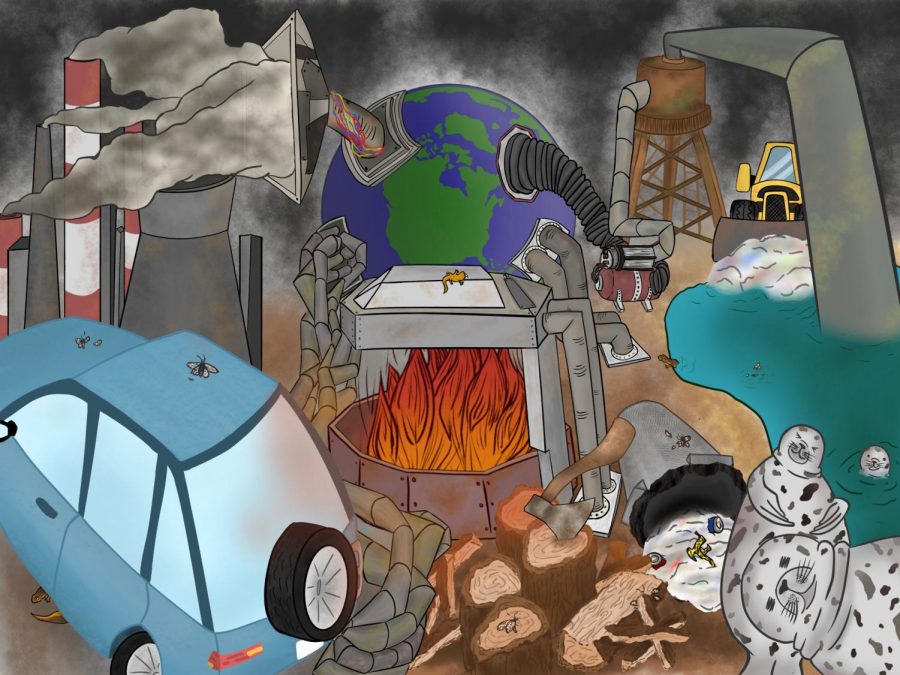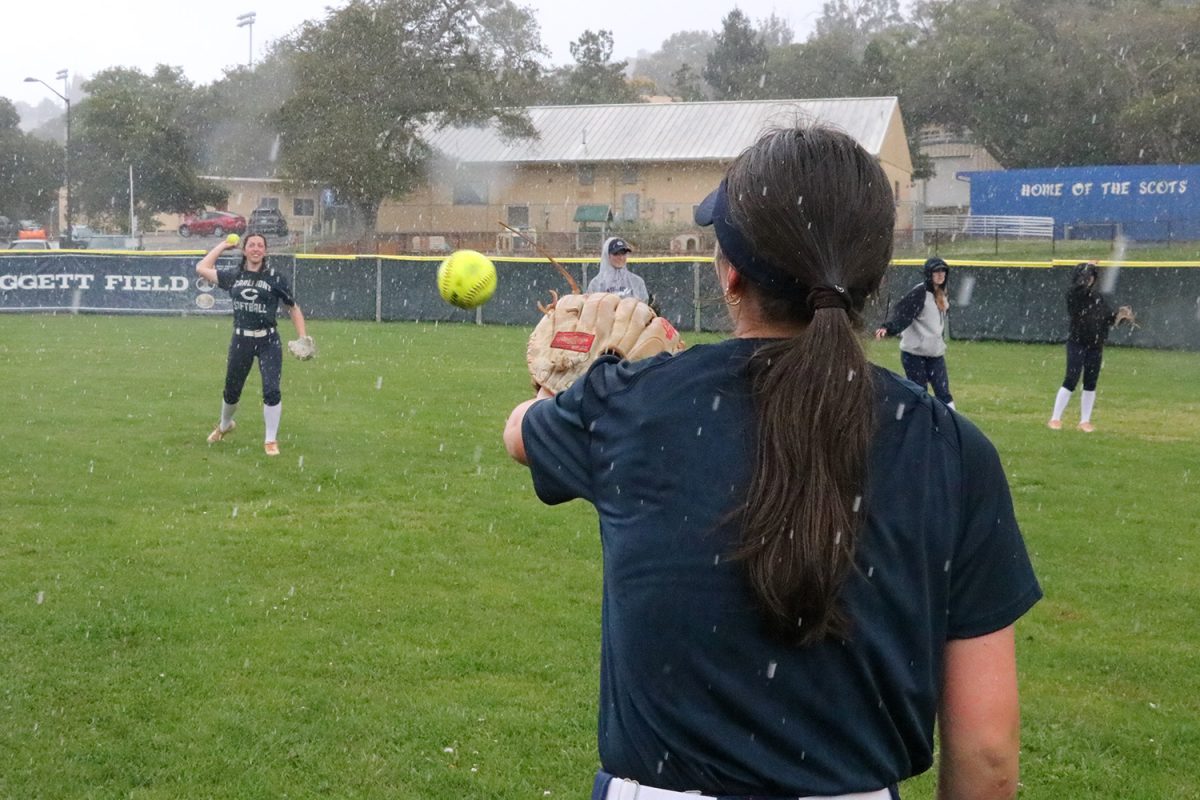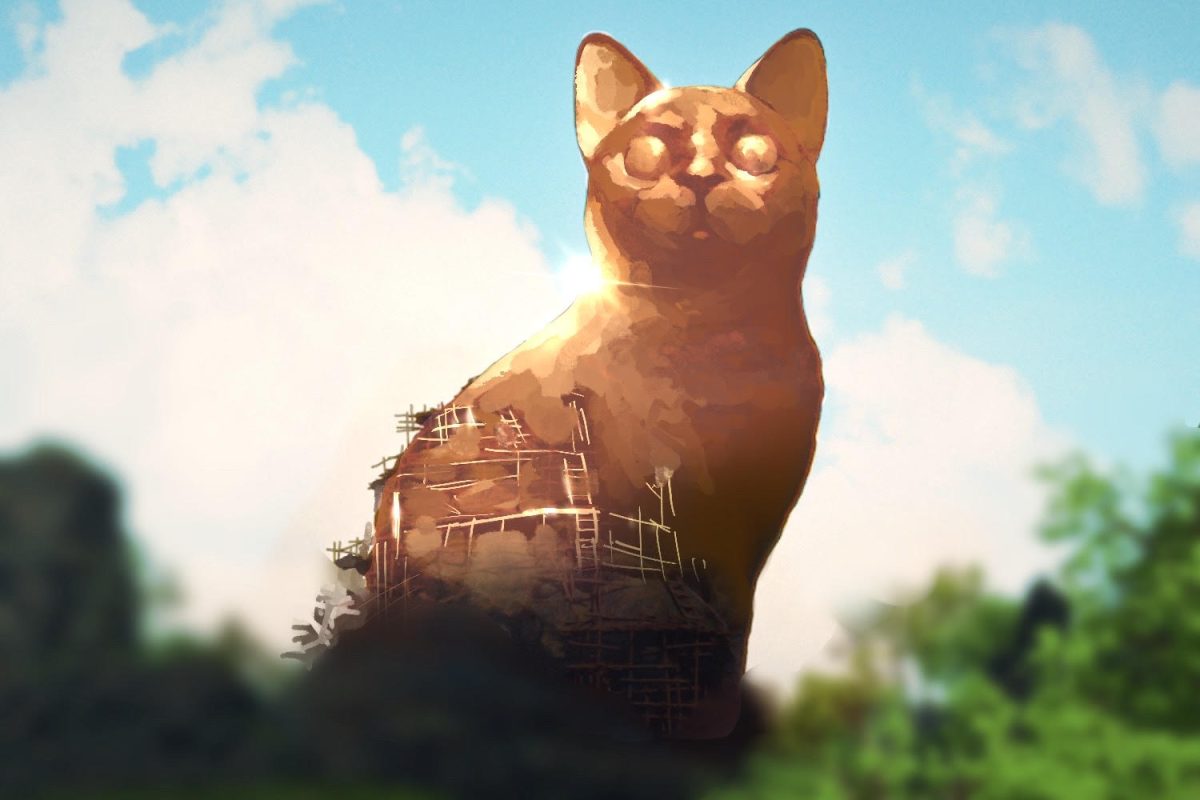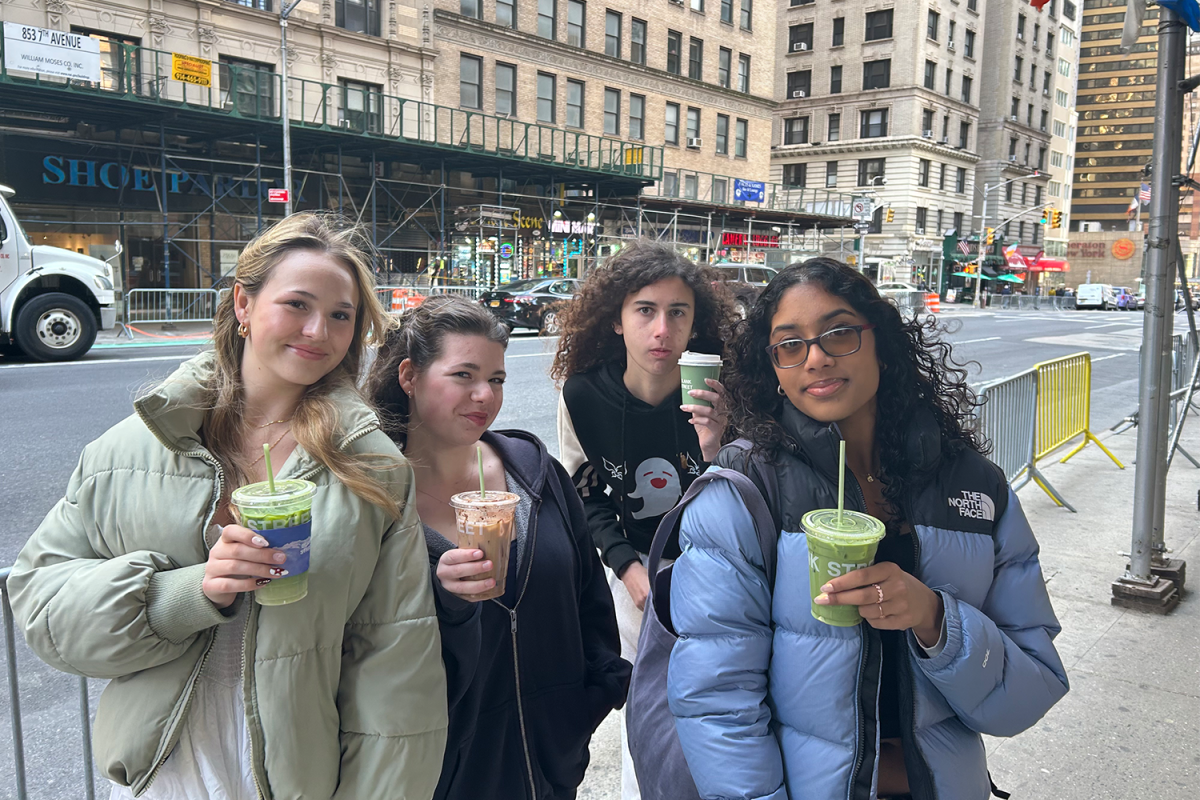Global warming: gas emissions trap heat in the atmosphere and the polar ice caps. That statement is too vague. Global warming is but a part of the much, much more significant problem.
Environmental change: global warming, water pollution, air pollution, environmental degradation, droughts, invasive species, changing weather, etc. caused by human activity. This description is far more accurate.
Humanity is lucky; they are innovative, flexible, and adaptable. Slight changes to the environment wouldn’t affect them to the point of extinction. They would find a way to work around the problem. But that’s the thing, to the rest of the 8.7 million other species, changes can easily wipe them out. Simply put, genetic adaptation cannot compete with the speed at which humans alter the environment, and many are unaware of this reality.
During the UN Climate Action Summit in 2019, Greta Thunberg spoke out about the reality of human reactions to environmental change.
“Entire ecosystems are collapsing. We are at the beginning of mass extinction, and all you can talk about is money and fairytales of eternal economic growth,” Thunberg said.
When most people think of environmental changes, they imagine circumstances such as melting glaciers or orangutans left to die on lumbering sights. However, there is more to the story. Human-caused environmental effects have found their way to every nook and cranny on this planet. Look no further than the Bay Area to discover changes just as dramatic and drastic as those thousands of miles away.
Air Pollution
Going hand-in-hand with global warming is the most commonly known form of environmental change, air pollution. Greenhouse gases trap heat from the Sun to help regulate the temperature of the planet. The Earth is all about balance; low concentrations of greenhouse gases can bring about ice ages, whereas high concentrations heat the Earth. Emissions from agriculture, transportation, landfill, and buildings are all disrupting that balance. Following the Industrial Revolution, the production of greenhouse gasses rose drastically. Since 1880, the Earth has warmed a little over 2 Fahrenheit overall, according to NASA.
The Bay Area is no exception. Since the 1950’s the average temperature has risen 1.7 Fahrenheit, and in 2018 San Francisco ranked 49th out of the 723 worst air polluted cities in the United States, according to IQ air. These statistics are quite frightening on paper, but those fears became a reality to the Bay Checkerspot Butterfly.
As the name implies, these butterflies display a beautiful white and orange checkered pattern on their wings. They only reside around the Bay Area, specifically Edgewood Preserve, Kirby Canyon, Coyote Ridge, and San Bruno Mountain State Park. Of the sites listed, the butterflies of Edgewood Wildlife Preserve, located next to Highway 280, were hit the hardest by air pollution. Initially, the preserve was home to a healthy population until 2003, when the butterflies disappeared. It was soon discovered that nitrogen from car emissions helped invasive grasses take over the hillside and overrun the native plants; the butterfly larva’s food, as well as the butterflies themselves, went extinct. Since 2007, scientists and volunteers have continued to reintroduce these butterflies to Edgewood. They mow down the invasive grasses and release caterpillars from the neighboring communities into the reserve. The Bay Checkerspots of Edgewood has been making their slow recovery.

The story of the Bay Checkerspot in Edgewood leaves both a sinister and hopeful note for air pollution in the Bay Area. California is fighting to resolve that problem, potentially saving species in a similar situation as the butterflies. By 2045 California has a goal of going carbon-free. Furthermore, on September 23, Governor Gavin Newsom issued an ambitious executive order:
“In the next 15 years, we will eliminate in the state of California the sales of internal combustion engines; we will move forward to green and decarbonize our vehicle fleet here in the state of California. As a consequence, substantially reducing greenhouse gas emissions as well as oxide nitrogen meaning NOx emissions here in the state of California. In so doing, it will improve air quality, as well as improve the economic climate here in the state of California,” Newsom said.
Drought
Residents of the Bay Area are well aware of droughts in California. To many, it feels like a miracle when the blue skies are covered in clouds, and it starts to rain. According to U.S. Climate data, this is reflected in the annual precipitation, where the national average is a little over 30 inches, compared to San Francisco’s meager 23.66 inches.
Why are there so many droughts in California? The truth is California is no stranger to dryness; however, droughts in recent times are the worst in its history. The root of the problem is none other than global warming. Higher temperatures make wet regions wetter and dry areas drier by causing shifts in weather patterns; in the Bay Area’s case, shifting storms away from California.
According to the National Integrated Drought Information System (NIDIS), the longest drought since 2000 lasted 376 weeks from 2011 to 2019, and by no means is California off the hook. Over 15 million residents are currently in a drought, making up 41% of California’s population. These residents may have to follow water restrictions or experience water shortages.

Plants and animals suffer more severe conditions: death by dehydration, starvation, loss of habitat, and many more challenges. It is no secret that amphibians are the most affected by climate change. According to UCLA, it is estimated that the amphibian extinction rate is 45,000 times greater with human influence than without it. The California Newt is especially hard-hit by droughts. Their habitat ranges from San Diego to the Bay Area, and they are known for their orange bellies. They can occasionally be spotted by flipping over a moist log or relaxing in a small pond. The newts around the Bay area are not severely impacted yet; unfortunately, California Newts in southern California have declined. From 2008 to 2016, their body mass has decreased by an average of 20%. Further effects are still being studied, but one thing is clear, it’s only a matter of time before these effects worsen and reach the newts in the Bay Area. California has set up guidelines to reduce water use, essential in minimizing wastewater, but it is not a solution to preventing these intense droughts. The root of the problem comes back to global warming and the buildup of greenhouse gasses.
Wildfires
Along with droughts, California is widely known for its Wildfire season. In recent years the accumulation of miscalculations and environmental changes have led to the increase in the number and magnitude of wildfires, inevitably spiraling out of control.
Due to drought and global warming, California’s climate has become hotter and drier, creating prime conditions for wildfires. Nine of the ten hottest years have occurred since 2000, and nine of the ten largest fires have occurred in the past ten years. On top of that, high-speed winds, from shifting weather patterns in the Sierra Nevada, quite literally fan the flames and making it difficult for planes and helicopters to drop water onto the fire accurately.
Biggest Fires in California’s history by Kai Yoshida
“The [California] fire season is now 40 to 80 days longer each year. Because of this, climatologists are predicting that the area burned since 2000 will double or triple in the next three decades,” said Paul Hessburg, a research ecologist, during a TED talk.
To make matters worse, the Forest Service lacks the resources to do their work properly. For decades the focus has gone to putting out all wildfires; about 50% of the Forest Service’s budget goes to fighting the multitude of wildfires, according to the Forest History Society. However, wildfires are necessary for California’s ecosystem. Without fires, the forests become dense and overrun with undergrowth making fires burn faster and hotter.
The increasing heat and intensity of the flames may one day jeopardize the livelihood of California’s state tree, the Coastal Redwood. Generally speaking, California’s ecosystem is well adapted to wildfires. The Redwood tree can easily survive wildfire with their bark that is two feet thick, and their seeds sprout after a wildfire has passed. But, in the 1950s, 95% of old-growth redwood trees were logged, and as a result, the forest became much denser and, coupled with the invasive undergrowth, fires are increasingly hotter. Everything has a limit, Redwoods are not endangered now, but their future remains uncertain.
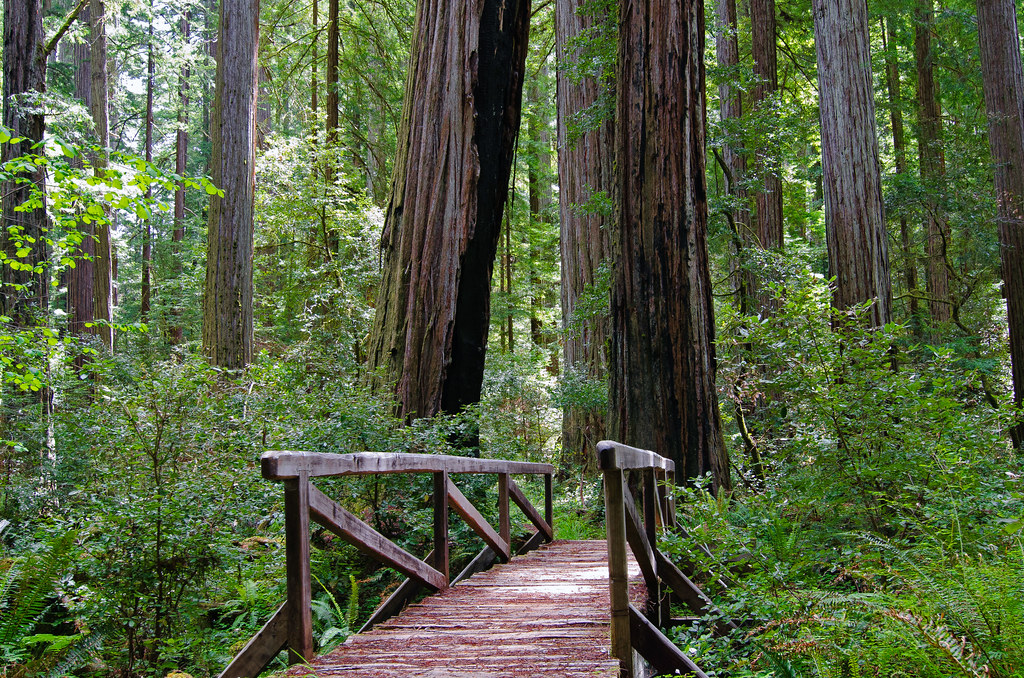
However, all is not yet lost: “The silver lining is that we have tools and we have the know-how to do this. We can use prescribed burning to intentionally thin out trees and burn up dead fuels. We do this to systematically reduce them and keep them reduced. And what is that going to do? It’s going to create already-burned patches on the landscape that will resist the flow of future fires,” Hessburg said.
More budget needs to be allocated to forest management, which includes mechanical trimming, and controlled burns thinning out the forest to prevent large scale wildfires and, in doing so, securing the future of the Redwood.
Bay Pollution
Rain is a blessing for wildfires, but for the San Francisco Bay, it’s a nightmare. When water runs along streets and gutters towards storm drains, they pick up trash, microparticles, and chemicals. Eventually, these pollutants are pumped out into the Bay. San Francisco Estuary Institute (SFEI) estimates that 7 trillion particles of microplastics make their way into the Bay annually. Additionally, fertilizers, pesticides, oils, and – worst of all – toxins like polychlorinated biphenyls (PBC) as well as Mercury all run into the Bay.
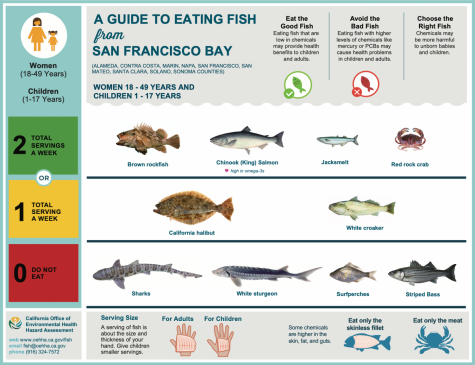
Currently, 91 contaminants are monitored by the Safe Drinking Water Act, but this is minuscule compared to the hundreds of thousands of chemicals in use today. Fertilizers provide the nutrients needed for algae to grow, lowering the oxygen content in the water. At the same time, PBC and Mercury contaminate the fish in the San Francisco Bay. According to the California Office of Environmental Health Hazard Assessment (OEHHA), White Sturgeons, sharks, Surfperches, and Striped Bass have such high concentrations of these chemicals that eating them is unsafe.
Chemicals are passed on from plankton to fish, to bigger fish, and to top predators like the Harbors Seals—each step of the way, there is an increase of concentrations. The Harbor Seals range all across the globe, including the San Francisco Bay. These creatures grow to a little over five feet in length and 130 lbs. Their coats are gray and sport black dots across their bodies. Harbor Seals are not endangered, but they cannot escape the effects of environmental change. Studies from the California Academy of Sciences reveal that toxins lower reproduction and dampen their immune systems. A decline in Harbor Seals in Scotland is attributed to the chemicals in their waters, and there’s no telling if the population around the Bay will also suffer similar effects from prolonged pollution.

Of course, if the problem were just water pollution, it would be much simpler. The warming water shifts the seals’ prey elsewhere and supports new pathogens that cause diseases. Furthermore, the rising water level and strong storms can erode the shoreline causing loss of habitat. While water pollution most directly affects the seals, humans also eat the sea creatures of the Bay. The waste humans pump out into the ocean come full circle and make their way back to hurt the polluters.
Responsibility
All forms of environmental change interlock and connect. Air pollution causes global warming, heating the Earth, and altering the weather patterns, then causing raging wildfires, prolonged droughts, and rising sea levels. This throws the complex ecosystems out of balance, impacting the millions of creatures living in them.
Environmental changes affect all. Humans are the root of the problem, yet continue to be the least harmed. As the ones who caused the problems, it is the responsibility of humankind to fix it. What California is attempting through its executive order is not only going to save human lives but also save the lives of the creatures that share this planet.
“What we’re advancing here today is a strategy to address that crisis head-on to be as bold as the problem is big to recognize and reconcile the fact that we have agency that we can shape this debate so we can shape our future so that we’re not just victims of fate,” Newsom said.
If there is a leaking roof, dripping water onto the floor, one does not continue to mop it up. They would instead fix the hole that was the cause of the leaking. In this analogy, Humanity is that leak.


